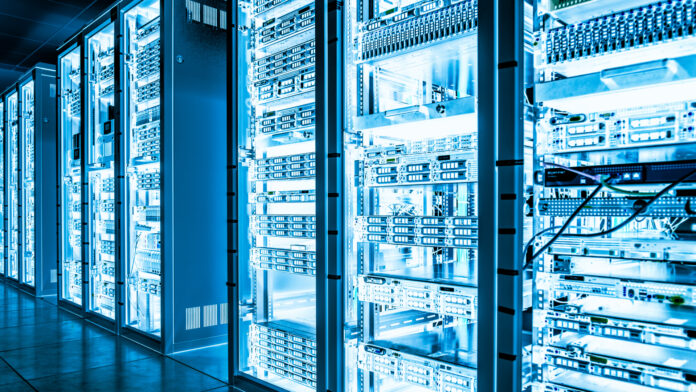AI infrastructure, especially purpose-built data centers, are creating a surge in power demand and foregrounding energy efficiency strategies
The rapid growth of AI and the investments into the underlying AI infrastructure have significantly intensified the power demands of data centers. Globally, data centers consumed an estimated 240–340 TWh of electricity in 2022—approximately 1% to 1.3% of global electricity use, according to the International Energy Agency (IEA). In the early 2010s, data center energy footprints grew at a relatively moderate pace, thanks to efficiency gains and the shift toward hyperscale facilities, which are more efficient than smaller server rooms.
That stable growth pattern has given way to explosive demand. The IEA projects that global data center electricity consumption could double between 2022 and 2026. Similarly, IDC forecasts that surging AI workloads will drive a massive increase in data center capacity and power usage, with global electricity consumption from data centers projected to double to 857 TWh between 2023 and 2028. Purpose-built AI nfrastructure is at the core of this growth, with IDC estimating that AI data center capacity will expand at a 40.5% CAGR through 2027.
Given the massive energy requirements of today’s data centers and the even greater demands of new AI infrastructure, stakeholders must implement strategies to improve energy efficiency. This is not only essential for sustaining AI’s growth but also aligns with the net-zero targets set by many companies within the AI infrastructure ecosystem. Key strategic pillars include:
- Upgrading to more efficient hardware and architectures—generational improvements in semiconductors, servers, and power management components deliver incremental gains in energy efficiency. Optimizing workload scheduling can also maximize server utilization, ensuring fewer machines handle more work and minimizing idle power consumption.
- Optimizing Power Usage Effectiveness (PUE)—PUE is a key metric for assessing data center efficiency by considering cooling, power distribution, airflow, and other factors. Hyperscalers like Google have reduced PUE by implementing hot/cold aisle containment, raising temperature setpoints, and investing in energy-efficient uninterruptible power supply (UPS) systems.
- AI-driven management and analytics—AI itself can help mitigate the energy challenges it creates. AI-driven real-time monitoring and automation can dynamically adjust cooling, power distribution, and resource allocation to optimize efficiency.
One of the primary goals is to scale AI infrastructure globally without a proportional increase in energy consumption. Achieving this requires a combination of investment in modern hardware, advancements in facility design, and AI-enhanced operational efficiency.
Liquid cooling and data center design
As rack densities increase to support power-hungry GPUs and other AI accelerators, cooling is becoming a critical challenge. The need for more advanced cooling solutions is not only shaping vendor competition but also influencing data center site selection, as operators consider climate conditions when designing new facilities.
While liquid cooling is not new, the rise of AI has intensified interest in direct-to-chip cold plates and immersion cooling—technologies that remove heat far more efficiently than air cooling. In direct-to-chip cooling, liquid circulates through cold plates attached to AI semiconductors, while immersion cooling submerges entire servers in a cooling fluid. Geography also plays a role, with some operators leveraging free cooling, which uses ambient air or evaporative cooling towers to dissipate heat with minimal energy consumption.
While liquid and free cooling require higher upfront capital investments than traditional air cooling, the long-term benefits are substantial—including lower operational costs, improved energy efficiency, and the ability to support next-generation AI workloads.
New AI-focused data centers are being designed from the ground up to accommodate higher-density computing and advanced cooling solutions. Key design adaptations include:
- Lower rack density per room and increased spacing to optimize airflow and liquid cooling efficiency.
- Enhanced floor loading capacity to support liquid cooling equipment and accommodate heavier infrastructure.
- Higher-voltage DC power systems to improve energy efficiency and integrate with advanced battery storage solutions.
Taken together, liquid cooling and data center design innovations will be crucial for scaling AI infrastructure without compromising energy efficiency or sustainability.

